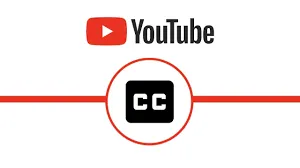
YouTube 自動字幕系統
如果你曾經上傳過影片到 YouTube,你可能會驚訝地發現,該平台會自動產生字幕,無需你進行任何設定。許多創作者第一次看到它時,都會感到懷疑:
身為一個親自經營頻道的創作者,這些問題一直困擾著我。因此,我進行了測試,深入研究了 YouTube 字幕背後的技術機制,並嘗試使用不同的方法來優化字幕效果。.
在本文中,我將嘗試與您一起回答這些問題:
如果您是 YouTube 影片創作者,並希望提高內容的專業性,那麼您一定會從本文中獲得一些有用的提示和建議。.
是的,YouTube的自動字幕確實是由AI技術產生的。.
YouTube 自 2009 年起推出自動字幕功能,該功能基於 Google 自己的 ASR 技術(自動語音識別該技術利用人工智慧演算法,將影片中的即時語音內容識別為文本,並自動產生同步字幕。.
我在上傳影片到我的頻道時體驗過這個功能:無需任何設置,只要語言辨識成功,YouTube 通常就會在幾分鐘到幾小時內自動產生字幕。它支援多種語言,包括英語、中文、日語、西班牙語等。.
YouTube 的官方幫助文檔 明確指出:
“自動字幕 是使用語音辨識技術產生的,由於語速、口音、音質或背景噪音等原因,可能不夠準確。 」”
由此可見,自動字幕的本質確實是AI技術驅動的產物,但它仍然存在一定的辨識誤差,在多人說話、發音不清、背景音樂較多的場景下,很容易出現錯誤。.
如果您希望字幕更加準確和自然,特別是如果您需要支援多語言翻譯或將其用於商業目的,您可能需要使用更專業的 AI字幕工具, 例如 易訂閱, ,讓您可以自由編輯字幕,以標準化格式匯出字幕,支援翻譯,並改善整體觀看體驗。.
為了回答「YouTube 自動字幕到底準不準?」這個問題,我做了多次測試,比較了不同語言、不同類型影片的字幕辨識結果。以下分析基於我真實的創作經驗、人工校對記錄以及資料觀察。.
| 影片類型 | 語言 | 期間 | 內容風格 |
|---|---|---|---|
| 教育影片 | 中國人 | 10分鐘 | 清晰的講話,包括術語 |
| 每日視訊博客 | 英語 | 6分鐘 | 自然的節奏,輕柔的口音 |
| 動漫評論 | 日本人 | 8分鐘 | 快節奏、多人對話 |
| 語言 | 平均準確率 | 常見問題 |
|---|---|---|
| 英語 | ✅ 85%–90% | 輕微拼字錯誤,句子斷句略顯不自然 |
| 中國人 | ⚠️ 70%–80% | 錯誤辨識技術術語、缺少標點符號 |
| 日本人 | ❌ 60%–70% | 多人對話混亂、結構錯誤 |
為什麼準確率會有差異?從語音辨識的技術角度來看,YouTube 使用的 AI 屬於通用語音模型,對英語的訓練資料量最為豐富,因此英文字幕的表現最為穩定。然而,對於中文、日語等語言,系統更容易受到以下因素的影響:
說到YouTube的自動字幕系統,不得不承認背後的AI技術確實幫助了不少創作者。但作為一名真正經營頻道的內容創作者,我在多次使用過程中也感受到了它的優勢和明顯的限制。.
我認為它適合內容比較輕、對字幕要求不太高的場景。例如日常vlog、隨拍、聊天影片等等。但如果你的影片內容包含:
那麼 YouTube 自動字幕是不夠的。. 您需要一個像 Easysub 這樣的 AI 字幕工具。. 它不僅 自動產生字幕, ,也支援翻譯、編輯、匯出、燒錄等功能,真正滿足您對專業字幕的一切需求。.
在了解了 YouTube 自動字幕的優缺點之後,許多創作者(包括我自己)都會問:
“那麼我該怎麼做才能讓我的視訊字幕更專業、更準確、更符合品牌形象呢?”
作為一名實際經營 YouTube 教學頻道的創作者,我嘗試了各種方法,最終總結了三種適合不同職業階段創作者的專業字幕添加方法。以下是我結合個人經驗、技術邏輯和實用建議整理出來的,希望能對大家有幫助。.
適合:熟悉字幕製作,有時間,追求準確性的創作者。.
流程如下:
優點:完全可自訂的字幕,精確控制
缺點:成本高、耗時長、生產門檻高
💡 我嘗試用 Aegisub 製作字幕,製作一個 10 分鐘的影片至少花了 2 個小時。效果不錯,但對於一個高頻更新的頻道來說效率太低了。.
適合:大多數內容創作者、教育影片、行銷影片以及需要多語言字幕的用戶。.
拿我的熱門工具 易訂閱 例如,只需幾個步驟即可產生高品質的字幕:
優點:
缺點:高級功能需要升級到付費版本,但入門功能有免費試用支持,足以滿足日常需求
📌 我的真實體驗是 Easysub 的字幕準確率可以達到 95%以上 經過自動辨識+少量人工修改,比YouTube自帶的字幕穩定很多。.
適合:對視覺一致性要求較高且有設計要求的品牌視頻
在編輯軟體(例如 Adobe Premiere、Final Cut Pro、CapCut)中,您可以:
優點:視覺藝術風格自由
缺點:不可搜尋(非文字格式),以後不易修改,非常耗時
💡 我使用 Premiere 為一個品牌客戶製作了硬字幕,並製作了一段字幕風格一致的宣傳片。效果很棒,但維護成本較高,不適合大量處理內容。.
身為內容創作者,我知道不同類型的影片對字幕的準確性、編輯彈性、翻譯能力和效率有不同的需求。那麼,對你來說,YouTube 自動字幕就夠了嗎?還是你需要使用專業的字幕工具?
在本節中,我將結合自己的經驗、內容類型的差異以及技術技能的門檻,從創作者的角度幫助您確定哪種字幕解決方案更適合您。.
| 創作者類型 | 內容風格 | 推薦字幕方法 | 原因 |
|---|---|---|---|
| 新的 YouTuber/Vlogger | 娛樂、休閒生活方式、自然言語 | ✅ YouTube 自動字幕 | 最易於使用,無需任何設置 |
| 教育者/知識創造者 | 技術術語,需要準確性 | ✅ Easysub + 手動審核 | 更高精度、可編輯、可導出 |
| 品牌/商業創造者 | 視覺一致性,多語言受眾 | ✅ Easysub + 透過編輯軟體手動設定樣式 | 品牌控制、設計靈活性 |
| 多語言/全球頻道 | 國際觀眾需要翻譯 | ✅ Easysub:自動翻譯與匯出 | 多語言支援+跨平台使用 |
| 特徵 | YouTube 自動字幕 | Easysub AI字幕工具 |
|---|---|---|
| 語言支援 | 多種語言 | 多語言+翻譯 |
| 字幕準確性 | 英語很好,其他方面略有不同 | 一致,90%+,略有修改 |
| 可編輯字幕 | ❌ 不可編輯 | ✅ 可視化字幕編輯器 |
| 匯出字幕文件 | ❌ 不支持 | ✅ 支援 SRT / VTT / ASS / TXT |
| 字幕翻譯 | ❌ 不可用 | ✅ 支援 30 多種語言 |
| 易於使用 | 非常簡單 | 簡單-適合初學者的使用者介面 |
YouTube 的 自動字幕的人工智慧技術 它或許很先進,但它並非為「要求苛刻的創作者」設計。如果你只是日常拍攝,偶爾上傳視頻,它可能就足夠了。.
但如果你:
那你應該選擇一個專業的工具,例如 易訂閱, ,這不僅可以節省您大量的時間,而且可以使字幕成為您視訊競爭力的一部分。.
YouTube 的自動字幕功能確實是由人工智慧驅動的,這項技術已經為無數創作者節省了大量時間。但正如我在個人測試中發現的那樣,自動字幕雖然方便,但遠非完美。.
如果您希望您的內容更加準確、多語言、專業,甚至具有國際市場價值,那麼更聰明、更靈活的字幕解決方案至關重要。.
這就是我長期使用 Easysub 的原因——這是一款 AI 字幕產生器,可以自動識別語音、智慧翻譯字幕,並支援匯出和編輯。它不僅易於使用,還能真正提升內容的覆蓋率和影響力。.
無論您是新的內容創作者還是成熟的頻道擁有者,字幕都是讓觀眾了解您的第一步。.
在內容全球化和短視訊爆炸性成長的時代,自動字幕已成為提高視訊可見度、可近性和專業性的關鍵工具。.
有了像 易訂閱, ,內容創作者和企業可以在更短的時間內製作出高品質、多語言、準確同步的視訊字幕,大大提高觀看體驗和分發效率。.
在內容全球化和短影片爆炸性成長的時代,自動字幕製作已成為提升影片可見度、可近性和專業度的關鍵工具。透過 Easysub 等 AI 字幕生成平台,內容創作者和企業能夠在更短的時間內製作出高品質、多語言、精準同步的影片字幕,從而顯著提升觀看體驗和發行效率。.
無論您是新手還是經驗豐富的創作者,Easysub 都能加速並增強您的內容創作。立即免費試用 Easysub,體驗 AI 字幕的高效智能,讓每個影片都能跨越語言界限,觸達全球受眾!
只需幾分鐘,即可讓 AI 為您的內容賦能!
👉 點此免費試用: easyssub.com
感謝您閱讀本部落格。. 如有更多問題或客製化需求,請隨時與我們聯繫!
